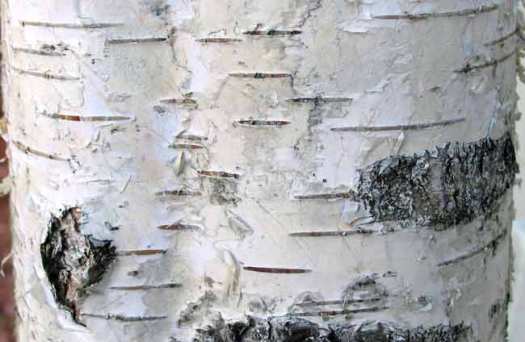Organisms utilize oxygen in their cellular activities in order to obtain energy. In some of these reactions, food is broken down into CO2 andwater by means of oxygen to extract energy. This process is known as cellular respiratio.The resultant energy is used by organisms for meatbolic activities such as active transport,protein synthesis ,biochemical and other reactions which require energy in the formof ATP.

Respiration in Plants
All living things get the energy they need to live from a chemical reaction called respiration. This process needs glucose as a starting point. First we’ll see how respiration works, and then look at how plants use respiration in combination with photosynthesis.
Living cells respire. Aerobic respiration is the chemical reaction used to release energy from glucose. It is called aerobic because oxygen from the air is also needed.
Here is the word equation for aerobic respiration. Energy is put in brackets because it not a substance:
glucose + oxygen → carbon dioxide + water (+ energy)
Notice that the word equation for respiration is the reverse of the word equation for photosynthesis. Check back if you are not sure of this.
Plant cells respire, just as animal cells do. If they stop respiring, they will die. Remember that respiration is not the same as breathing, so take care – plants do not breathe.
As we can see from the word equations respiration and photosynthesis are opposites. Respiration uses oxygen and produces carbon dioxide. Photosynthesis uses carbon dioxide and produces oxygen.
So what happens to a plant overall? This depends on whether it is in the dark or the light, and how bright the light is.
Plants respire all the time, whether it is dark or light. They photosynthesise only when they are in the light.
| Conditions | Photosynthesis v respiration | Overall result |
|---|---|---|
| Dark | Respiration No photosynthesis |
Oxygen taken in Carbon dioxide given out |
| Dim light | Photosynthesis rate equals respiration rate | Neither gas is taken in or given out, as each cancels the other out |
| Bright light | Photosynthesis rate greater than respiration rate | Carbon dioxide taken in Oxygen given out |
Photosynthesis usually results in a net food gain (net glucose gain), once respiration has been accounted for. This means that there is an increase in the biomass of the plant.
Plants that lose their leaves in winter store food produced during the summer by photosynthesis. They store enough food to last them over winter, and to provide energy reserves for new growth in the spring.
The structures that are effective in plant respiration are as follows:

Stomata-In botany, a stoma (plural “stomata”), also called a stomate (plural “stomates”) is a pore, found in the epidermis of leaves, stems, and other organs, that facilitates gas exchange. The pore is bordered by a pair of specialized parenchyma cells known as guard cells that are responsible for regulating the size of the stomatal opening.
The term is usually used collectively to refer to the entire stomatal complex, consisting of the paired guard cells and the pore itself, which is referred to as the stomatal aperture.Air enters the plant through these openings by gaseous diffusion, and contains carbon dioxide and oxygen, which are used in photosynthesis and respiration, respectively. Oxygen produced as a by-product of photosynthesis diffuses out to the atmosphere through these same openings. Also, water vapor diffuses through the stomata into the atmosphere in a process called transpiration.
Stomata are present in the sporophyte generation of all land plant groups except liverworts. In vascular plants the number, size and distribution of stomata varies widely. Dicotyledons usually have more stomata on the lower surface of the leaves than the upper surface. Monocotyledons such as onion, oat and maize may have about the same number of stomata on both leaf surfaces. In plants with floating leaves, stomata may be found only on the upper epidermis and submerged leaves may lack stomata entirely. Most tree species have stomata only on the lower leaf surface. Leaves with stomata on both the upper and lower leaf are called amphistomatous leaves; leaves with stomata only on the lower surface are hypostomatous, and leaves with stomata only on the upper surface are epistomatous or hyperstomatous. Size varies across species, with end-to-end lengths ranging from 10 to 80 µm and width ranging from a few to 50 µm.

Lenticels-A lenticel is a porous tissue consisting of cells with large intercellular spaces in the periderm of the secondarily thickened organs and the bark of woody stems and roots of dicotyledonous flowering plants. It functions as a pore, providing a pathway for the direct exchange of gases between the internal tissues and atmosphere through the bark, which is otherwise impermeable to gases. The name lenticel, pronounced with an [s], derives from its lenticular (lens-like) shape. The shape of lenticels is one of the characteristics used for tree identification.

Roots-In vascular plants, the root is the organ of a plant that typically lies below the surface of the soil. Roots can also be aerial or aerating, that is, growing up above the ground or especially above water. Furthermore, a stem normally occurring below ground is not exceptional either (see rhizome). Therefore, the root is best defined as the non-leaf, non-nodes bearing parts of the plant’s body. However, important internal structural differences between stems and roots exist.
